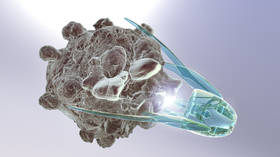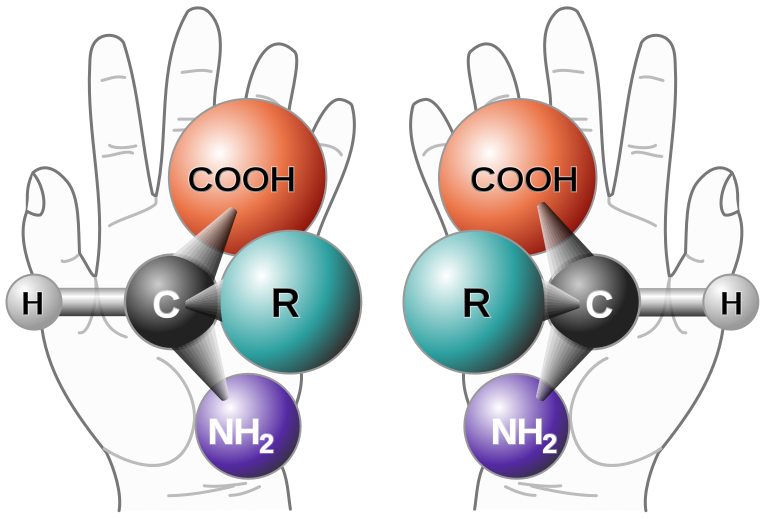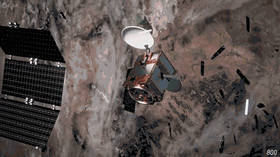Scientists pave way for new era of medicine by observing nanoparticles for 1st time

Physicists have achieved a world first which could revolutionize the field of medicine by measuring and studying a single, twisted nanoparticle in isolation, paving the way for microscopic ‘labs’ to replace traditional drugs.
Researchers at the University of Bath employed a cutting-edge technique known as hyper-Rayleigh scattering optical activity (HRS OA) to examine gold particles at the nanoscale level, or somewhere in the region of 10,000 times smaller than a pinhead.
Using this technique, they were able to measure the gold particles’ chirality. This is the particular twist in a given material which cannot be superimposed on any other, making it unique. A person’s left hand cannot be superimposed on their right and therefore is chiral from the right hand. For example, depending on the material, this chirality might afford a citrus fruit molecule’s smell, clockwise for lemon, counterclockwise for orange.

“Chirality is one of the most fundamental properties of nature. It exists in sub-atomic particles, in molecules (DNA, proteins), in organs (the heart, the brain), in bio-materials (such as seashells), in storm clouds (tornadoes) and in the shape of galaxies (spirals hurtling through space),” elaborated lead researcher Professor Ventsislav Valev.
The ability to measure and study molecules at isolation and in the nanoscale has massive implications for everything from medicines, to our food and even pesticides.
“This is both a record and a milestone in nanotechnology,” Professor Valev added.
The technology, which employs laser pulses, can detect a single nanoparticle floating in a liquid. It’s hoped it could be used to help produce pharmaceuticals in an incredibly detailed and customizable way.
Also on rt.com ‘Trojan Horse’: New nanoparticle can prevent heart attacks by 'eating' artery blockages FROM THE INSIDENanoscale medicines developed using precise, minute amounts of ingredients would afford doctors the ability to more accurately treat specific illnesses and diseases in previously unfathomable ways.
“You’ll be able to go to the chemist with a prescription and instead of receiving a medicine that has to be mixed from bottles of chemicals and then stored in the fridge for several days, you’ll walk away with pills that are mini-labs. Upon cracking the pill, a precise number of micro-droplets will flow through microchannels to mix and produce the needed medicine,” Professor Valev explained.
Think your friends would be interested? Share this story!














